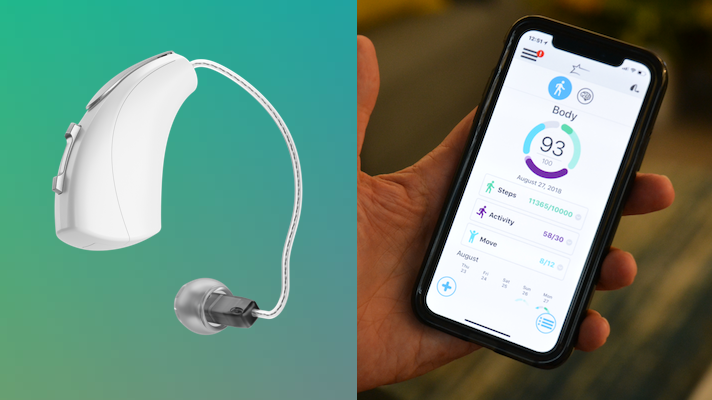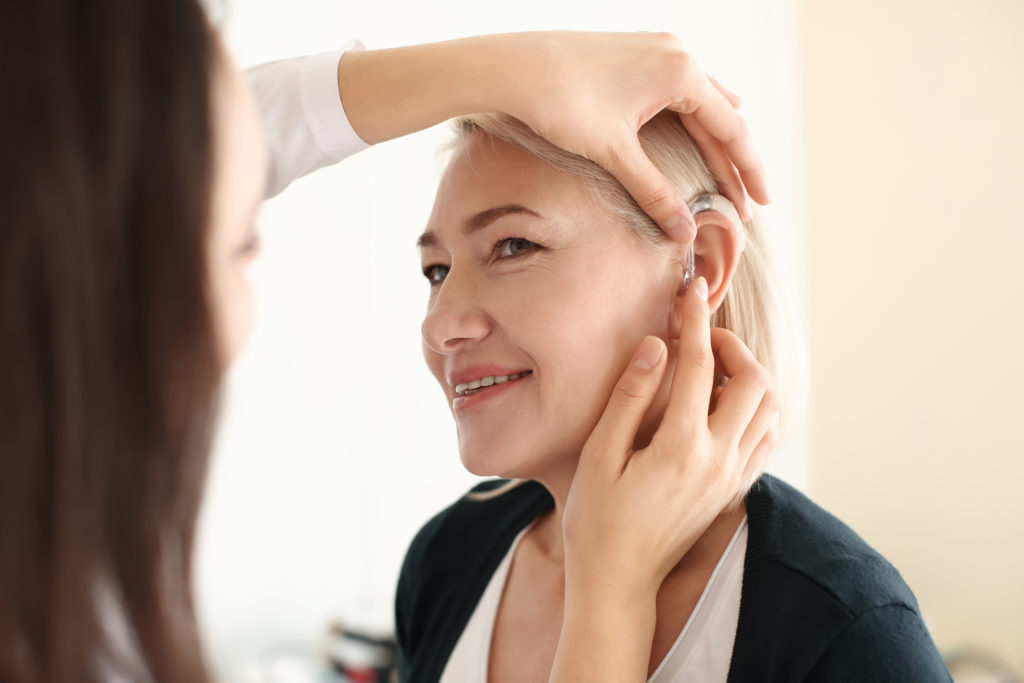Patients are happy with Hearing Aids
By Neil & Shannon Aiello, Doctors of Audiology, Columbia Basin Hearing Center
Hearing aids? When questioned, many people say they are hesitant because they have a friend, who has an aunt, whose husband spent a great amount of money on hearing aids that he hated in the end. There are indeed many “hearing aid horror stories” circulating the popular bridge clubs and local fishing holes. (“They were uncomfortable, they made everything louder, they whistled, and of course, they cost so darn much.”) There was a time that these were valid complaints from hearing aid users, however, we are happy to report that those times are over.
In 2011, it was reported that 74 percent of hearing aid users are satisfied with their hearing aids, a 55 percent increase from 2000. Furthermore, satisfaction with hearing aids that are less than one year old has increased to 81 percent; 82 percent would recommend hearing aids to a friend (MarkeTrak VIII, 2010). The patient population of hearing aid users has not changed much in the past ten years. So what has changed to account for this increase in satisfaction?
There has been much advancement resulting in greater patient experience and satisfaction. The hearing aid technology itself has exponentially advanced. Equally important, Audiologists providing hearing care have also grown in knowledge and patient care.
As with every other modern technology, be it cell phones or computers, new hearing aid technologies are also rapidly emerging. These advancements have focused on increasing audibility of a speaker in a difficult listening situation, such as background noise. Hearing aids are now automatically processing when “noise” or unwanted sound is present and reducing it, as well as processing when “speech” or a desired listening signal is present and increasing it. Most of the hearing aids dispensed today have automatic adjustments, making it so patients don’t have to adjust the hearing aids themselves. With new hearing aids performing countless adjustments per millisecond, it’s no wonder patients are hearing better in difficult environments.
Another emerging technology is Bluetooth. In its simplest form, Bluetooth technology allows patients to directly receive audio input through their hearing aids. For example, if a person is using a cell phone with Bluetooth compatible hearing aids, the signal from the phone is routed through the hearing aid rather than through the phone allowing the patient to “hear” the phone directly through the hearing aids. This technology is also available for the television, landline phones, or iPods. It can aid in hearing while in a difficult environment such as a restaurant or the car, by using a small lapel microphone. These advancements have added another level of satisfaction for hearing aid users and their families. There has also been advancement in the styles of hearing aids offered. Gone are the days of the Grandma Monster Behind-the-Ear or In-the-Ear hearing aids. New digital hearing aids, have become more streamlined and cosmetically appealing. There are now hearing aids that fit down the ear canal and are 100% invisible, allowing for the most cosmetically concerned patients to experience the benefits of better hearing without the embarrassment of others knowing they have a hearing aid.
More important than the technological advancements or design, patients are more satisfied with the care they are receiving from their Audiologists. Many Audiologists have now obtained their Doctor of Audiology, or Au.D., which has increased their education and training. Our patients are always recommended appropriate technology based on their unique needs and listening environments, and not the latest hearing fads. By instituting patient-centered care, the Audiologist, patient, and significant family members work closely with one another. The patient is routinely seen for aural rehabilitation, which involves retraining the brain to hear again, through the trial period and beyond to make sure that they are experiencing better quality of life through better hearing.
If you or your loved one has been hesitant to try hearing aids because of Aunt Betty’s hearing aid horror story, there has never been a better time to experience the benefits of advanced hearing technology and patient-centered care.
Ensure the best hearing possible by calling one of our Doctors of Audiology today!







